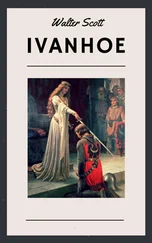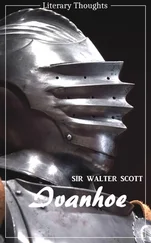‘Wha will gar our shearers shear?
Wha will bind up the brags of weir?’
in a lyric by Hamilton of Gilbertfield (1665-1751). The reaper’s song is the later representative of this practice. See Wordsworth’s ‘Solitary Highland Reaper’-immortalized by her suggestive and memorable singing-and compare the pathetic ‘Exile’s Song’ of Robert Gilfillan (1798-1850):-
‘Oh! here no Sabbath bell
Awakes the Sabbath morn;
Nor song of reapers heard
Among the yellow corn.’
For references to Susquehanna and the home-longing of the exile, see Campbell’s ‘Gertrude of Wyoming,’ I. i.-vi. The introduction of reaping-machines has minimised the music and poetry of the harvest field.
Stanzas X, XI. The two pictures in the song are very effectively contrasted both in spirit and style. The lover’s resting-place has features that recall the house of Morpheus, ‘Faery Queene,’ I. i. 40-1. Note the recurrence of the traitor’s doom in Marmion’s troubled thoughts, in VI. xxxii. The burden ‘eleu loro’ has been somewhat uncertainly connected with the Italian ela loro , ‘alas! for them.’
Stanza XIII. lines 201-7. One of the most striking illustrations of this is in Shakespeare’s delineation of Brutus, who is himself made to say (Julius Caesar, ii. I. 18):-
‘The abuse of greatness is, when it disjoins
Remorse from power.’
For the sentiment of the text cp. the character of Ordonio in Coleridge’s ‘Remorse,’ the concentrated force of whose dying words is terrible, while indicative of native nobility:-
‘I stood in silence like a slave before her
That I might taste the wormwood and the gall,
And satiate this self-accusing heart
With bitterer agonies than death can give.’
line 211. ‘Among other omens to which faithful credit is given among the Scottish peasantry, is what is called the “dead-bell,” explained by my friend James Hogg to be that tinkling in the ears which the country people regard as the secret intelligence of some friend’s decease. He tells a story to the purpose in the “Mountain Bard,” p. 26 [pp. 31-2, 3rd edit.].’-SCOTT.
Cp. Tickell’s ‘Lucy and Colin,’ and this perfect stanza in Mickle’s ‘Cumnor Hall,’ quoted in Introd. to ‘Kenilworth’:-
‘The death-bell thrice was heard to ring,
An aerial voice was heard to call,
And thrice the raven flapp’d its wing
Around the towers of Cumnor Hall.’
line 217. Cp. Midsummer Night’s Dream, v. I. 286: ‘The death of a dear friend would go near to make a man look sad.’
Stanza XIV. lines 230-5. Cp. the effect of Polonius on the King (Hamlet, iii. I. 50):-
‘How smart a lash that speech doth give my conscience!’
Hamlet himself, ib. line 83, says:-
‘Thus conscience does make cowards of us all.’
line 234. For vail= lower, see close of Editor’s Preface.
Stanza XV. line 243. For practised on= plotted against, cp. King Lear, iii. 2. 57, ‘Hast practised on man’s life.’
lines 248-51. See above, II. xxix.
Stanza XVII. line 286. Cp. Burns’s ‘Bonnie Doon’:-
‘And my fause lover staw my rose,
But ah! he left the thorn wi’ me.’
Stanza XVIII. line 307. Loch Vennachar, in the south of Perthshire, is the most easterly of the three lakes celebrated in the ‘Lady of the Lake.’
line 321. Cp. ‘wonder-wounded hearers,’ Hamlet, v. I. 265.
Stanza XIX. line 324. Clerkis a scholar, as in Chaucer’s ‘Clerk of Oxenford,’ &c., and the ‘learned clerks’ of 2 Henry VI, iv. 7. 76. See below, VI. xv. 459, ‘clerkly skill.’
line 325. Alexander III (1240-1286) came to the throne at the age of nine, and proved himself a vigorous and large-hearted king. He was killed by a fall from his horse, near Kinghorn, Fife, where there is a suitable monument to his memory. The contemporary lament for his death bewails him as one that ‘Scotland led in love and lee.’ Sir Walter Scott (Introductory Remarks to ‘Border Minstrelsy’) calls him ‘the last Scottish king of the pure Celtic race.’
line 333. ‘A vaulted hall under the ancient castle of Gifford, or Yester (for it bears either name indifferently), the construction of which has, from a very remote period, been ascribed to magic. The Statistical Account of the Parish of Garvald and Baro, gives the following account of the present state of this castle and apartment:-”Upon a peninsula, formed by the water of Hopes on the east, and a large rivulet on the west, stands the ancient castle of Yester. Sir David Dalrymple, in his annals, relates that ‘Hugh Gifford de Yester died in 1267; that in his castle there was a capacious cavern, formed by magical art, and called in the country Bo-Hall, i.e. Hobgoblin Hall.’ A stair of twenty-four steps led down to this apartment, which is a large and spacious hall, with an arched roof; and though it hath stood for so many centuries, and been exposed to the external air for a period of fifty or sixty years, it is still as firm and entire as if it had only stood a few years. From the floor of this hall, another stair of thirty-six steps leads down to a pit which hath a communication with Hopes-water. A great part of the walls of this large and ancient castle are still standing. There is a tradition that the castle of Yester was the last fortification, in this country, that surrendered to General Gray, sent into Scotland by Protector Somerset.”- Statistical Account , vol. xiii. I have only to add, that, in 1737, the Goblin Hall was tenanted by the Marquis of Tweedale’s falconer, as I learn from a poem by Boyse, entitled “Retirement,” written upon visiting Yester. It is now rendered inaccessible by the fall of the stair.
‘Sir David Dalrymple’s authority for the anecdote is in Fordun, whose words are:-”A. D. MCCLXVII. Hugo Giffard de Yester moritur; cujus castrum, vel saltem caveam, et donglonem, arte daemonica antique relationes ferunt fabrifactas: nam ibidem habetur mirabilis specus subterraneus, opere mirifico constructus, magno terrarum spatio protelatus, qui communiter BO-HALL appellatus est. ” Lib. x. cap. 21.-Sir David conjectures, that Hugh de Gifford must either have been a very wise man, or a great oppressor.’-SCOTT.
Stanza XX. line 354. ‘In 1263, Haco, King of Norway, came into the Frith of Clyde with a powerful armament, and made a descent at Largs, in Ayrshire. Here he was encountered and defeated, on the 2nd October, by Alexander III. Haco retreated to Orkney, where he died soon after this disgrace to his arms. There are still existing, near the place of battle, many barrows, some of which, having been opened, were found, as usual, to contain bones and urns.’-SCOTT.
line 358. Ayrshire in early times comprised three divisions, Cunninghame in the north, Kyle between the Irvine and the Doon, and Carrick to the south of that stream. Burns, by his song ‘There was a Lad was born in Kyle,’ has immortalised the middle division, which an old proverb had distinguished as productive of men, in contradistinction to the dairy produce and the stock of the other two.
line 362. ‘“Magicians, as is well known, were very curious in the choice and form of their vestments. Their caps are oval, or like pyramids, with lappets on each side, and fur within. Their gowns are long, and furred with fox-skins, under which they have a linen garment reaching to the knee. Their girdles are three inches broad, and have many cabalistical names, with crosses, trines, and circles inscribed on them. Their shoes should be of new russet leather, with a cross cut upon them. Their knives are dagger-fashion; and their swords have neither guard nor scabbard.”-See these, and many other particulars, in the Discourse concerning Devils and Spirits, annexed to REGINALD SCOTT’S Discovery of Witchcraft , edition 1665.’-SCOTT.
Читать дальше






